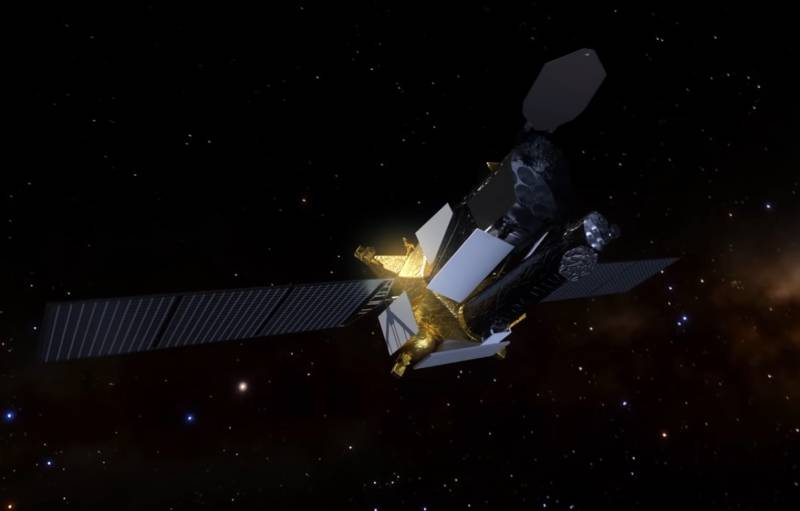What is the significance for Russia of launching the Spectra-RG?
On July 13, the Proton launch vehicle successfully launched a valuable scientific load from the Baikonur Cosmodrome. Two hours later, the Spektr-RG astrophysical observatory separated from it and went on a 100-day independent trip to the Lagrange point L2, where it should work for the next 6-7 years. What does this event mean for domestic science?
First of all, it is necessary to mention that July 13 was the date of the backup start. On June 21, it turned out that the unique observatory was nearly sent into space with a discharged battery, about which we told earlier. Fortunately, they managed to detect the problem on Earth and eliminate it in time, which helped to avoid shameful embarrassment and international scandal, since Germany acted as a partner in the scientific project.
"Spectrum-RG" will now allow you to make a lot of new discoveries and create unique maps of the starry sky. The advantages of the Russian-German observatory over other telescopes is that it operates in the x-ray spectrum. Today, only x-rays, due to their properties “squeeze” between atoms, are able to convey to us information from the far corners of the universe.
The spacecraft surpasses its existing analogues - the American Chandra and the European XMM-Newton, since it operates in much harder X-rays. In this range, the observatory can even see black holes, quasars, and other distant objects shaded by clouds of interstellar dust and gas.
Two telescopes are installed at once on the Spectrum-RG. The first is the Russian ART-XC, which is able to work with extreme emissions with power from 6 to 30 keV. This became possible only thanks to the unique polishing of the telescope mirrors, which domestic scientists were able to produce. However, the viewing angle of the ART-XC will be less than that of the German telescope. eROSITA, developed in Germany, will be able to see more due to wide-angle, but in a weaker range of 0,3-10 keV. Such synergy will provide the maximum amount of scientific information.
In addition, the spacecraft will surpass competitors due to its successful location. This is a specially, carefully calculated by astronomers, Lagrange point L2. In it, our planet gives maximum shadow, blocking the radiation of our Sun. For convenience, you have to pay the need to constantly maneuver, maintaining the orbit. Therefore, the life of the astrophysical observatory is estimated at 6-7 years, when it runs out of fuel.
After about 100 days, Spectrum-RG will arrive at a given point and begin scanning the starry sky. It is expected that he will compose eight star maps and give a ton of new information. Despite the difficulties in implementation, the project can be considered a breakthrough in domestic and world science.
First of all, it is necessary to mention that July 13 was the date of the backup start. On June 21, it turned out that the unique observatory was nearly sent into space with a discharged battery, about which we told earlier. Fortunately, they managed to detect the problem on Earth and eliminate it in time, which helped to avoid shameful embarrassment and international scandal, since Germany acted as a partner in the scientific project.
"Spectrum-RG" will now allow you to make a lot of new discoveries and create unique maps of the starry sky. The advantages of the Russian-German observatory over other telescopes is that it operates in the x-ray spectrum. Today, only x-rays, due to their properties “squeeze” between atoms, are able to convey to us information from the far corners of the universe.
The spacecraft surpasses its existing analogues - the American Chandra and the European XMM-Newton, since it operates in much harder X-rays. In this range, the observatory can even see black holes, quasars, and other distant objects shaded by clouds of interstellar dust and gas.
Two telescopes are installed at once on the Spectrum-RG. The first is the Russian ART-XC, which is able to work with extreme emissions with power from 6 to 30 keV. This became possible only thanks to the unique polishing of the telescope mirrors, which domestic scientists were able to produce. However, the viewing angle of the ART-XC will be less than that of the German telescope. eROSITA, developed in Germany, will be able to see more due to wide-angle, but in a weaker range of 0,3-10 keV. Such synergy will provide the maximum amount of scientific information.
In addition, the spacecraft will surpass competitors due to its successful location. This is a specially, carefully calculated by astronomers, Lagrange point L2. In it, our planet gives maximum shadow, blocking the radiation of our Sun. For convenience, you have to pay the need to constantly maneuver, maintaining the orbit. Therefore, the life of the astrophysical observatory is estimated at 6-7 years, when it runs out of fuel.
After about 100 days, Spectrum-RG will arrive at a given point and begin scanning the starry sky. It is expected that he will compose eight star maps and give a ton of new information. Despite the difficulties in implementation, the project can be considered a breakthrough in domestic and world science.

Information